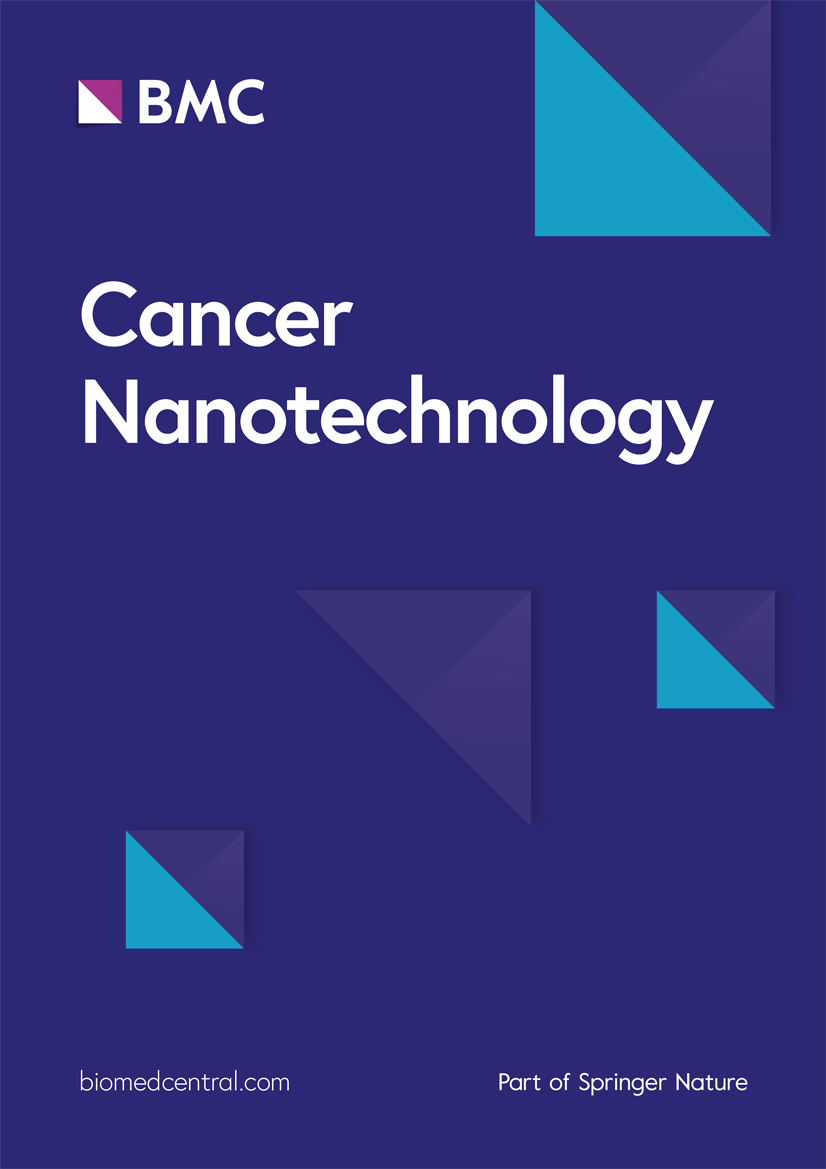基于芦荟提取的碳量子点和掺铬氧化铝纳米粒子(Al2O3:Cr@Cdot NPs)的新型纳米制剂的开发:评估纳米粒子在光动力疗法中的抗癌和抗菌活性
IF 4.8
2区 工程技术
Q2 NANOSCIENCE & NANOTECHNOLOGY
引用次数: 0
摘要
本研究旨在通过溶胶-凝胶法,利用芦荟提取的碳量子点(Cdot)和掺杂铬的氧化铝纳米粒子(Al2O3:Cr/Cdot NPs)合成一种新型抗菌抗癌纳米制剂。X 射线衍射(XRD)分析确认了尺寸范围为 10-12 纳米的结晶 NPs,而能量色散 X 射线光谱(EDS)则显示了它们的元素组成,不含杂质。傅立叶变换红外光谱(FT-IR)显示,Cdot 和 Al2O3:Cr NPs 之间存在很强的相互作用,形成了坚固的异质结构。扫描电子显微镜(SEM)和透射电子显微镜(TEM)图像提供了单分散球形 NPs 的直观确认,确保了进一步应用的一致性。对活性氧(ROS)的评估表明,Al2O3:Cr/Cdot NPs 能产生光动力疗法所必需的单线态氧和羟基自由基。最低抑菌浓度(MIC)测试表明,Al2O3:Cr/Cdot NPs 对耐药细菌具有强大的抗菌活性,对 MRSA 和铜绿假单胞菌 PAO1 的生物膜形成的抑制率分别为 89% 和 95%。此外,还使用 C26 细胞对 Al2O3:Cr/Cdot NPs 的抗癌活性进行了评估,结果表明其在 UVA 暴露下具有更强的细胞毒性。在没有 UVA 暴露的情况下,NPs 的抑制浓度(IC50)为 20 μg/mL,而在 UVA 暴露的情况下,抑制浓度降至 10 μg/mL,这凸显了 UVA 光在增强细胞毒性方面的协同效应。总之,这些发现强调了 Al2O3:Cr/Cdot NPs 作为多功能制剂在解决耐药细菌问题和促进癌症治疗方面的巨大潜力,为纳米医学的研究和开发提供了广阔的前景。本文章由计算机程序翻译,如有差异,请以英文原文为准。
Development of a novel nanoformulation based on aloe vera-derived carbon quantum dot and chromium-doped alumina nanoparticle (Al2O3:Cr@Cdot NPs): evaluating the anticancer and antimicrobial activities of nanoparticles in photodynamic therapy
The objective of this study was to synthesize a novel antibacterial and anticancer nanoformulation using aloe vera-derived carbon quantum dots (Cdot) and chromium-doped alumina nanoparticles (Al2O3:Cr/Cdot NPs) via a sol–gel method. X-ray diffraction (XRD) analysis confirmed crystalline NPs with a size range of 10–12 nm, while energy-dispersive X-ray spectroscopy (EDS) revealed their elemental composition without impurities. Fourier-transform infrared spectroscopy (FT-IR) indicated strong interactions between Cdot and Al2O3:Cr NPs, forming a robust heterostructure. Scanning electron microscopy (SEM) and transmission electron microscopy (TEM) images provided visual confirmation of monodisperse, spherical NPs, ensuring uniformity for further applications. Evaluation of reactive oxygen species (ROS) demonstrated superior generation of singlet oxygen and hydroxyl radicals by Al2O3:Cr/Cdot NPs, essential for photodynamic therapy. Minimum inhibitory concentration (MIC) tests revealed potent antibacterial activity against drug-resistant bacteria, inhibiting biofilm formation by 89% and 95% for MRSA and P. aeruginosa PAO1, respectively. Furthermore, the anticancer activity of Al2O3:Cr/Cdot NPs was assessed using C26 cells, demonstrating enhanced cytotoxicity upon UVA exposure. The NPs exhibited an inhibitory concentration (IC50) of 20 μg/mL without UVA exposure, decreasing to 10 μg/mL with UVA exposure, highlighting the synergistic effect of UVA light in enhancing cytotoxicity. Overall, these findings underscore the significant potential of Al2O3:Cr/Cdot NPs as multifunctional agents for addressing drug-resistant bacteria and advancing cancer therapy, offering promising avenues for nanomedicine research and development.
求助全文
通过发布文献求助,成功后即可免费获取论文全文。
去求助
来源期刊

Cancer Nanotechnology
Pharmacology, Toxicology and Pharmaceutics-Pharmaceutical Science
CiteScore
5.20
自引率
1.80%
发文量
37
审稿时长
15 weeks
期刊介绍:
Aim:
Recognizing cancer as a group of diseases caused by nanostructural problems (i.e. with DNA) and also that there are unique benefits to approaches inherently involving nanoscale structures and processes to treat the disease, the journal Cancer Nanotechnology aims to disseminate cutting edge research; to promote emerging trends in the use of nanostructures and the induction of nanoscale processes for the prevention, diagnosis, treatment of cancer; and to cover related ancillary areas.
Scope:
Articles describing original research in the use of nanostructures and the induction of nanoscale processes for the prevention, diagnosis and treatment of cancer (open submission process). Review, editorial and tutorial articles picking up on subthemes of emerging importance where nanostructures and the induction of nanoscale processes are used for the prevention, diagnosis and treatment of cancer.
 求助内容:
求助内容: 应助结果提醒方式:
应助结果提醒方式:


